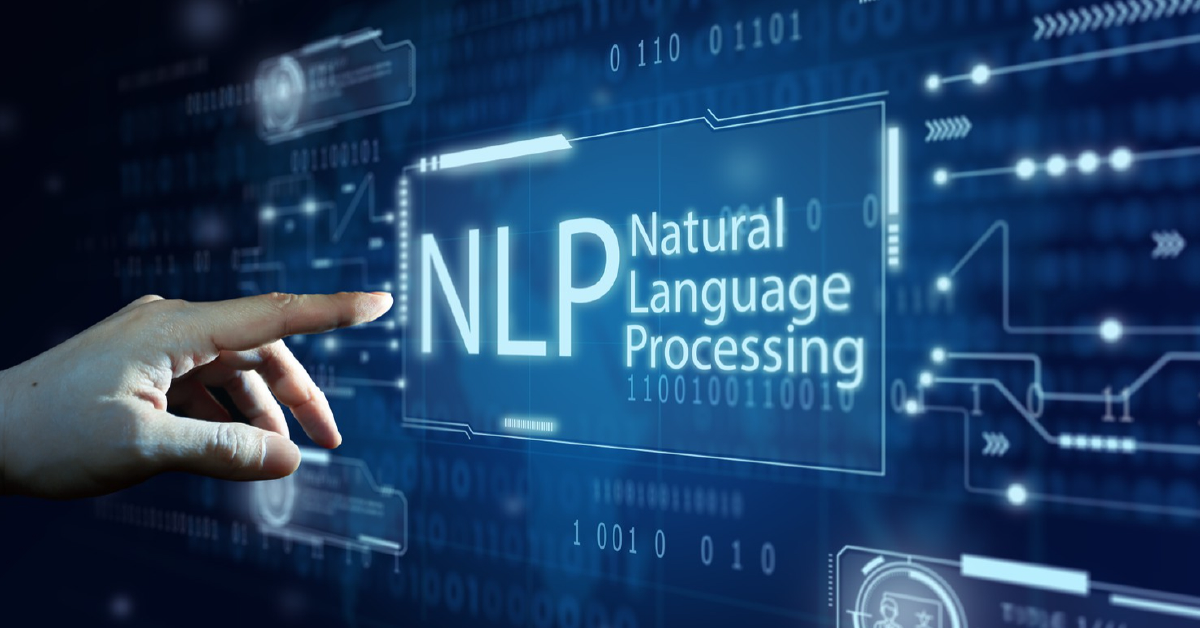Natural Language Processing for Better Website Interactions

5 min read
It is more important than ever to have seamless communication and technological engagement. Websites are crucial to these encounters, whether the party seeking to engage customers is a business or a blogger seeking to share their ideas. Natural Language Processing can be a game-changer in this situation because the effectiveness of these interactions can make or break a website.
What is The Meaning of “Natural Language Processing”?
A subfield of artificial intelligence (AI) called “natural language processing” (NLP) enables computers to understand, produce, and manipulate human language. Data can be questioned using natural language text or voice through natural processing language. Another name for this is “language in.” Without realizing it, most consumers have undoubtedly engaged with text analysis. For instance, Siri, Cortana, and Alexa are all virtual assistants that use NLU as their primary technology. It is what gives these virtual assistants the ability to answer in natural language to our inquiries while also understand our requests.
Computational linguistics is applicable to both spoken and written communication and to all human languages. Web search, spam screening, automatic translation of text and sentiment analysis are more examples that use nature processing language. It is used by these applications to read, analyze, and respond to your communication. For instance, certain email programs can automatically recommend a suitable reply to a message based on its content.
It is synonymous with a number of other words. NLU and NLG stand for natural language understanding and natural language generation, respectively, which refer to the use of computers to understand and produce human language. NLG can articulate what transpired verbally. Using a technique known as “grammar of graphics,” this is also referred to as “language out” because it summarizes significant information into text.
Exploring the Intersection of NLU, Computational Linguistics, and Machine Learning
NLU is commonly used to refer to natural processing language. The ability of computers to comprehend the grammar and meaning of all human languages enables users and developers to communicate with computers in everyday language. The engineering discipline of computational linguistics focuses on creating computing artifacts that grasp, produce, or manipulate human language, whereas computational linguistics (CL) investigates the computational aspects of human language.
Language technology is a field of research that draws on both linguistics and AI. It was first studied immediately after the development of digital computers in the 1950s. However, machine learning-a field of artificial intelligence that creates systems that learn and generalize from data-has been the driving force behind the big advances of recent years. In order to understand the complexity of natural processing languages using datasets taken from the web, deep learning is a type of machine learning that can learn very complicated patterns from massive datasets.
Why is NLP Crucial for Online Interactions?
Simple, it improves engagement, personalization, and user experience. Web app development services cover a broad spectrum of technologies and tactics intended to improve your online presence. The following are some scenarios in which AI language processing is essential.
-
Chatbots
Website customer care is increasingly using conversational AI chatbots. These chatbots can respond to frequent questions, point users in the direction of useful content, and even offer troubleshooting advice. They provide users with rapid assistance in addition to lessening the workload for human customer service representatives.
-
Sentiment Analysis
Businesses and content producers need to understand the emotional content of user comments and feedback. Website owners can determine how their audience feels about their goods or services by doing sentiment analysis on user-generated content. To better fulfill user expectations, enhancements and content modifications can be guided by this information.
-
Improved User Experience
The user experience on websites can be greatly improved using natural language understanding. Users can get real-time, round-the-clock assistance from chatbots and virtual assistants with their questions. As a result, there is less waiting for client service and instant satisfaction. For e-commerce websites, where users frequently need help placing orders or product information, this is particularly important. Higher user satisfaction may result from the convenience of quick responses.
-
Content Recommendation
To provide individualized content recommendations, human language technology can examine user behavior. A news website’s NLP algorithms propose more tech-related content if a reader frequently reads articles on technology, increasing user engagement.
-
Voice Interaction
Voice search and voice-activated commands are growing in popularity. It is made possible by language technology, which is not only practical but also satisfies users who prefer verbal conversation. Voice interaction on websites is likely to become a standard feature as smart speakers and virtual assistants gain popularity.

What Does The Technical Side of Natural Language Processing Encompass?
A complex interaction of algorithms, language models, and data processing goes into the technical side of AI language processing. To understand, evaluate, and produce human language, these systems use machine learning techniques. Sentiment analysis, part-of-speech tagging, syntactic and semantic parsing are the important components. Large language models like GPT-3, which are trained on enormous datasets, are also at the cutting edge of language technology. Because these models are able to understand and produce text that resembles human speech. People and robots can engage in more complex ways. The intricacy of these technological components is what allows it to absorb and understand the enormous variety and complexity of human languages.
What are Some Tips for Implementing NLP on Websites?
The following are some ideas to keep in mind if you’re a website owner or developer trying to use NLP for improved interactions:
- Understand your Audience: Recognize your audience and understand the tastes, requirements, and problems of your target audience. Provide solutions that matter most to your users by adjusting your natural language implementation to address these factors.
- Select the Correct Tools: A variety of tools and platforms are accessible. Choose those that are consistent with the aims and objectives of your website. Take into account elements like user-friendliness, scalability, and ease of integration.
- Test and Iterate: Implementing text analysis is a continuous process, so test and iterate. Based on user feedback and data analytics, continuously test and improve your text analysis features. To maintain the technology’s effectiveness, regular upgrades and improvements are necessary.
What are The Anticipated Future Trends in NLP and Website Interactions?
We may anticipate a number of fascinating trends in natural language understanding and website interactions as technology develops. These may consist of:
-
Voice Recognition
Voice-activated interactions on websites will be made possible via improved voice recognition, thus enhancing accessibility.
-
Multilingual Support
Websites will be able to easily reach a worldwide audience as human language technology continues to eliminate language barriers.
-
Emotion Recognition
A more sympathetic and individualized experience could be provided by NLU as it develops to understand user emotions and modify website interactions accordingly.
-
Ethical Considerations
There will be a greater emphasis on ethical issues, including privacy, bias prevention, and transparency in AI decision-making, as NLP is integrated more deeply into websites.
-
Data Privacy and Security
Data privacy and security will receive increasing attention when NLP is used to create more individualized interactions, as well as the necessity to safeguard sensitive user data.
As a result of these trends, website interactions will change in the future, becoming more intuitive, interesting, and user-friendly while also bringing up significant ethical and privacy issues that must be handled appropriately. To take advantage of NLP’s full potential in website interactions, companies and developers should stay current on these topics.
Conclusion
Finally, Natural Language Processing is transforming how people engage with websites. Websites are better able to connect with their audience because it improves user experience, personalization, and engagement. Website owners should think about incorporating chatbot technology into their platforms as they develop in order to keep on top of trends and deliver a superior customer experience.
It’s not only about remaining competitive when you utilize NLP on your website; it’s also about improving user relationships and giving them a seamless, positive experience. Without question, the potential of natural processing language is entwined with the future of online interactions.
In order to create a more interactive and engaging online presence, whether you run an e-commerce site, blog, or other online platform, consider using NLG.
Published: October 20th, 2023





